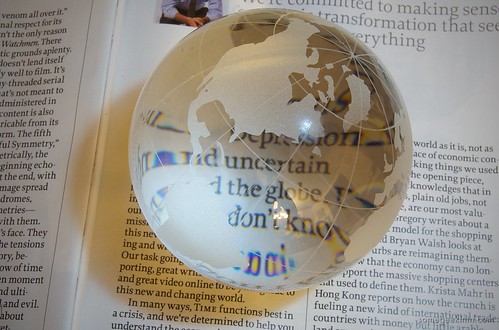Image shared on Flickr by somegeekintn via a CC license
I saw two very different pieces this week. Both made me react quite strongly so I thought I’d scribble a few lines about them. (aside: what’s the typing equivalent of scribble? Patter?)
Although really very different pieces, one devised, one scripted, one raucous and difficult, the other anxious and heartfelt, it felt like they were both, in some way about inarticulacy; Ugly the inarticulacy of a potential then, What I Heard About the World about the inarticulacy of being, now. Here are some thoughts:
Ugly
Ugly is a piece touring regionally with Red Ladder Theatre, the script is by Emma Adams and is a really challenging piece which I struggled with. It was only actually by the post-show discussion that it really began to work for me. That’s the first time how I felt about a piece has been changed so dramatically by talking with people involved. <insert something about me being stubborn>
Both the text and the direction was relentless. There were no still characters, no still moments, even moments of (opted) coitus were frenetic and impersonal, the characters seemed to be archetypes left out in the sun too long then fed a combination of amphetamines and ritalin, and the language warped and broke and jarred and choked with swear words. I struggled to hold my attention to it because it rattled on without respite. And I think that now feels like it was the point. It was not structurally sound. It felt like it was too long. And it said big things, at the same time as (with the frequent swears) saying nothing. It was a flawed vehicle about a flawed future. When I got back from Twitter I described it as a mix of Alice in Wonderland and Threads. And as I pile similes and metaphors on you – you hopefully see something, too, of inarticulacy. The experience of the play, not the words or the action, is where the heart of it lay.
But I also think that this play wasn’t really for me – not that I didn’t like it, but that for me, it’s not necessary. It was a piece for younger people, the ones who don’t see beyond now because as yet their life doesn’t require them to, and don’t connect the many news reports to a future. I don’t need convincing climate change is deadly. And I’m not one to be convinced in such a frenetic, physical way. I think it did want for a greater connection to that audience – this came out afterwards – ‘what happened in between’, ‘how did it get to that’ – they needed a glimpse of something they could recognise, to tie them back to their own lives. But it stubbornly refused that. And that’s a point in itself – you won’t recognise anything apart from that these are people. But some of them aren’t even that.
The other Climate Change Play that has stuck with me for a long time is (the lovely) Steve Water’s Contingency Plan. A completely different, very realistic, near-future double bill about flooding somewhere very like my home county and Westminster’s reaction to it. The script was an exquisite piece of almost porcelain sculpture – and as Steve, and like me, cerebral at heart. That was my watershed. But I think for a few people, younger, Ugly might be theirs.

